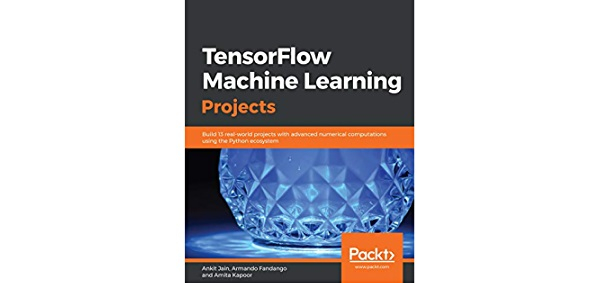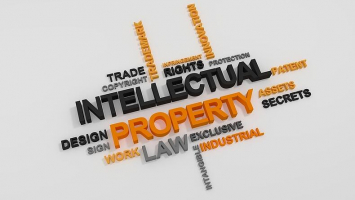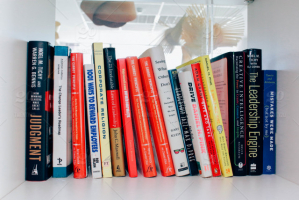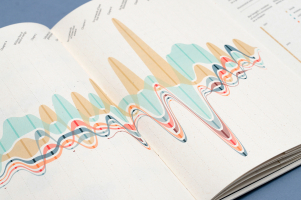Top 10 Best Books On Tensorflow
TensorFlow is a Google-developed and-maintained open-source deep-learning library. It has dataflow programming that can be used to conduct a variety of machine ... read more...learning tasks. It was designed to run on a variety of CPUs, GPUs, and even mobile operating systems, and it includes wrappers in Python, C++, and Java. Here is a curated selection of the 10 best books on TensorFlow that should be in every Deep Learning/Machine Learning Scientists Learners collection, from beginner to advanced.
-
Pramod Singh is currently employed at Walmart Labs as a Machine Learning Expert. He has a strong background in machine learning, deep learning, artificial intelligence, data engineering, algorithm design, and application development. He has more than ten years of experience working on various data projects for various firms. Machine Learning with PySpark, Learn PySpark, and Learn TensorFlow 2.0 are his three books.
Avinash Manure is a Senior Data Scientist at Publicis Sapient with more than 8 years of expertise in using data to solve real-world business problems. He knows how to use advanced machine learning and statistical modeling algorithms and techniques to find trends and extract important insights for key stakeholders and organizational leadership.
One of the best books on TensorFlow is Learn TensorFlow 2.0. With detailed examples, learn how to use TensorFlow 2.0 to develop machine learning and deep learning models. The book opens with an overview of the TensorFlow 2.0 framework, as well as the key modifications since its last version. It then moves on to utilizing TensorFlow 2.0 to create Supervised Machine Learning models. It also shows how to use customer estimators to create models. It also demonstrates how to utilize the TensorFlow 2.0 API to create a machine learning and deep learning models for image categorization using standard and custom parameters.
You'll go into sequence predictions, as well as saving, serving, deploying, and standardizing datasets, before putting these models into production. All of the code in the book will be available on Github as executable scripts, allowing you to experiment with the examples and extend them in creative ways.
What you will learn:
- Examine TensorFlow 2.0's new features.
- Build machine learning and deep learning models using TensorFlow 2.0.
- TensorFlow 2.0 is used to make sequence predictions.
- Use practical examples to deploy TensorFlow 2.0 models.
Authors: Pramod Singh & Avinash Manure
Check price: https://www.amazon.com/Learn-TensorFlow-2-0-Implement-Learning-dp-1484255607/dp/1484255607?

Photo: https://www.amazon.com/ 
Photo: https://www.tensorflow.org/ -
Rowel Atienza is an Associate Professor at the University of the Philippines, Diliman's Electrical and Electronics Engineering Institute. He is the Dado and Maria Banatao Institute Professorial Chair in Artificial Intelligence, and his work on an AI-enhanced four-legged robot earned him an MEng from the National University of Singapore.
The bestselling book on advanced deep learning techniques available today, Advanced Deep Learning with TensorFlow 2 and Keras, Second Edition, has been substantially updated. With additional chapters on unsupervised learning utilizing mutual information, object detection (SSD), and semantic segmentation (FCN and PSPNet) for TensorFlow 2. x, this version introduces you to the practical side of deep learning, letting you develop your own cutting-edge AI projects.
The book begins with an overview of multi-layer perceptrons (MLPs), convolutional neural networks (CNNs), and recurrent neural networks (RNNs), before moving on to deeper neural network architectures, such as ResNet and DenseNet, and how to develop autoencoders. Then you'll learn about GANs and how they can help AI to new heights.
Following that, you'll learn how to use a variational autoencoder (VAE) and how GANs and VAEs have the generative power to create data that is incredibly convincing to humans. You'll also learn how to use DRL, such as Deep Q-Learning and Policy Gradient Methods, to achieve many of today's AI outcomes.
What you will learn:
- To achieve unsupervised learning, use mutual information maximization strategies.
- Segmentation is a technique for determining the pixel-by-pixel class of each object in a picture.
- Using object detection, determine the bounding box and class of objects in a picture.
- MLPs, CNNs, and RNNs are the building blocks for advanced approaches.
- Recognize deep neural networks, such as ResNet and DenseNet.
- Autoencoders, VAEs, and GANs are examples of autoregressive models to learn about and construct.
- Methods for deep reinforcement learning must be discovered and implemented.
Some reviews about this book: "Great visuals, code, and math. The book delivers what the deep learning practitioner needs: advanced content with replicable and reproducible results. I highly recommend this great book by Rowel Atienza."; "Advanced Deep Learning with TensorFlow 2 and Keras - Second Edition is a good and big step into an advanced practice direction. It's a brilliant book and I consider this as a must-read for all."
Author: Rowel Atienza
Check price: https://www.amazon.com/Advanced-Deep-Learning-TensorFlow-Keras/dp/1838821651?

Photo: https://www.goodreads.com/ 
Photo: https://mobile.twitter.com/ -
Krishna Rungta has worked in professional software development and testing for over 13 years, as an individual contributor, technical lead, and now CEO. He is a computer nerd who believes that the future will rely largely on nerds for both security and company success. By publishing books and sharing his incredible experiences, he hopes to democratize knowledge.
Tensorflow is the most widely used Deep Learning library. It features a superb graph computations capability that allows data scientists to use TensorBoard to visualize their created neural network. Both Convolution and Recurrent Neural Networks are supported by this Machine Learning library. It supports both CPU and GPU simultaneous processing. Deep Learning Classification, wipe & deep, and Boston Tree is just a few of the machine learning algorithms offered by TensorFlow. The book is really practical, and it teaches you how to use deep learning in the real world.
Some reviews about this book: “This book is simple and fascinating. I pursue this book and furthermore get numerous accommodations. I wish it would become prominent and famous. I adore it definitely.”; “As a "newbie" it has been a chore to find a concise explanation and introduction to the overall subject matter of AI, ML, and DL.”
Author: Krishna Rungta
Check price: https://www.amazon.com/TensorFlow-Day-Make-Neural-Network-ebook/dp/B07H474R7Q?

Photo: https://www.amazon.com/ 
Photo: https://www.amazon.com/ -
Pete Warden is the technical lead for TensorFlow on mobile and embedded devices. He formerly worked at Apple and was the CTO and founder of Jetpac, which was acquired by Google in 2014. He was a founding member of the TensorFlow team and blogs at https://petewarden.com on practical deep learning.
At Google, Daniel Situnayake is in charge of developer advocacy for TensorFlow Lite. Tiny Farms, the first US company to use automation to generate insect protein on an industrial scale, was co-founded by him. He began his career as a lecturer at Birmingham City University, where he taught automatic identification and data acquisition.
Another best book on Tensorflow is TinyML. The size of deep learning networks is shrinking. Much, much smaller. The Google Assistant team has developed a model that is only 14 kilobytes in size and can run on a microcontroller. You'll enter the realm of TinyML with this practical book, where deep learning and embedded systems converge to make incredible things possible with tiny devices.
Pete Warden and Daniel Situnayake show how to train models that are small enough to fit into any setting. This guide leads you through constructing a series of TinyML projects, step by step, and is ideal for software and hardware engineers who wish to design embedded systems utilizing machine learning. No prior knowledge of machine learning or microcontrollers is required.
What you will learn:
- Create a voice recognition system, a people-detecting camera, and a magic wand that responds to motions.
- Use Arduino and ultra-low-power microcontrollers in your projects.
- Learn the fundamentals of machine learning and how to create your own models.
- Models should be trained to comprehend audio, picture, and accelerometer data.
- Explore Google's TensorFlow Lite for Microcontrollers, a TinyML toolbox.
- Debug programs and add privacy and security protections.
- Latency, energy consumption, and model and binary size should all be optimized.
Some reviews about this book: “I am using the TinyML book to develop usable, hands-on competence with Tensorflow and machine learning. The book is a great starting point for learning this technology.”; “This is a fantastic, well-written, highly-entertaining resource for devs of all levels curious about running machine learning models on resource-limited devices and looking to play with edge computing.”
Authors: Pete Warden, Daniel Situnayake
Check price: https://www.amazon.com/TinyML-Learning-TensorFlow-Ultra-Low-Micro-Controllers/dp/1492052043?

Photo: https://www.tinyml.org/ 
Photo: https://towardsdatascience.com/ -
Thushan Ganegedara is a Ph.D. student in his third year at the University of Sydney in Australia. He is an expert in machine learning with a preference for deep learning. He lives dangerously and uses untested data to run algorithms. He also works for AssessThreat, an Australian start-up, as the principal data scientist. He earned his bachelor's degree in science (Hons) from the University of Moratuwa in Sri Lanka. He publishes technical papers and courses on machine learning regularly.
The majority of data available to deep learning applications comes from natural language processing (NLP), and TensorFlow is the most popular deep learning framework currently available. Natural Language Processing with TensorFlow combines TensorFlow and NLP to provide you with useful tools for working with today's massive amounts of unstructured data and applying these tools to specific NLP tasks.
What you will learn:
- NLP's fundamental concepts and methodologies for natural language processing,
- How to use TensorFlow functions to design neural networks to solve NLP jobs
- Methods for converting vast volumes of data into word representations that deep learning algorithms can understand.
- Techniques for employing CNNs and RNNs to conduct sentence classification and language generation.
- To address complicated text creation tasks, state-of-the-art sophisticated RNNs, such as long short-term memory, are being used.
- How to create a neural machine translation from the ground up by writing automatic translation programs.
- Trends and Advancements in NLP that are paving the way for the future.
Some reviews about this book: “Great book if you want to learn the practical application of NLP on Tensorflow. I loved the way the book was structured with examples and working code samples in Github.”; “I found the coverage of NLP with TensorFlow most comprehensive compared to any other book. I could solve some of my issues using the example presented in the book.”
Author: Thushan Ganegedara
Check price: https://www.amazon.com/Natural-Language-Processing-TensorFlow-language-ebook/dp/B077Q3VZFR?

Photo: https://www.amazon.com/ 
Photo: https://www.amazon.com/ -
Ankit Jain is a senior research scientist at Uber AI Labs, the company's machine learning research division. He has spoken at several of the world's leading AI conferences and colleges, including UC Berkeley, the O'Reilly AI Conference, and others.
Armando Fandango develops AI-enabled products using his deep learning, machine learning, distributed computing, and computational techniques experience and has held thought leadership roles as a Chief Data Scientist and Director at both startups and large corporations.
Amita Kapoor is an Associate Professor at the University of Delhi's SRCASW Department of Electronics. At the International Conference on Photonics 2008, she received the Best Presentation Award. She has published over 40 papers in international publications and conferences as a member of the ACM, IEEE, INNS, and ISBS.
TensorFlow has changed the way people think about machine learning. TensorFlow Machine Learning Projects shows you how to take advantage of TensorFlow's advantages—simplicity, efficiency, and flexibility—in a variety of real-world projects. You'll not only learn how to develop complex projects utilizing various datasets with the help of this book, but you'll also be able to solve common problems using a variety of libraries from the TensorFlow ecosystem.
What you will learn:
- Using a variety of datasets and approaches, learn about the TensorFlow ecosystem.
- Create mechanisms for making high-quality product suggestions.
- Create projects with CNNs, natural language processing, and Bayesian neural networks.
- Deep reinforcement learning is used to play Pac-Man.
- Scalable TensorFlow-based machine learning systems should be deployed.
- RNNs can be used to create your book script.
Some reviews about this book: “There are lots of talks about Tensorflow and I was looking for a book which can explain the concepts and framework in a simplified way. As an AI/ML learner, I found this book very helpful and was able to adapt the Tensorflow for my current project in a faster way. This is an excellent book for the one who wants to learn Tensorflow even without any background.”
Authors: Ankit Jain, Armando Fandango & Amita KapoorCheck price: https://www.amazon.com/TensorFlow-Machine-Learning-Projects-computations-ebook/dp/B07GDHJBDZ?

Photo: https://www.amazon.com/ 
Photo: https://fado.vn/us/amazon/ -
Dr. Benjamin Planche is a passionate computer vision and machine learning researcher. His main research interests include data scarcity issues and industrial vision systems, which have resulted in multiple patents and papers presented at international conferences. He worked in several different research labs all over the world (including in France, Japan, Germany, and the USA).
Eliot Andres is a deep learning and computer vision engineer who works as a freelancer. His area of expertise is industrialization, which entails creating value by utilizing new technology to solve corporate difficulties. Eliot maintains his knowledge current by writing articles on his blog and creating prototypes employing cutting-edge technology.
Computer vision solutions are becoming more prevalent, with applications in industries as diverse as health, automobiles, social media, and robotics. This book will guide you through TensorFlow 2, the latest iteration of Google's open-source machine learning framework. You'll learn how to use convolutional neural networks (CNNs) for visual tasks to your advantage. It is considered one of the best books on TensorFlow.
What you will learn:
- Make your neural networks from the ground up.
- Use contemporary architectures like Inception and ResNet to classify photos.
- Using YOLO, Mask R-CNN, and U-Net, detect and segment objects in photos.
- Address issues that arise in the development of self-driving cars and facial expression recognition systems.
- Transfer learning, GANs, and domain adaptation can help your app perform better.
- For video analysis, using recurrent neural networks (RNNs).
- Optimize and deploy your networks in the browser and on mobile devices.
Some reviews about this book: “Being quite new in the field of Computer Vision, I have found this book to be a very good reference especially when it comes to translating the concepts of Deep Learning into actual code.”; “The book provides a clear mathematical background for understanding neural networks.”
Authors: Benjamin Planche, Eliot Andres
Check price: https://www.amazon.com/Hands-Computer-Vision-TensorFlow-processing-ebook/dp/B07SMQGX48?

Photo: https://tensorflowcomputervision.com/ 
Photo: https://www.amazon.com/ -
Santanu Pattanayak is currently employed as a Senior Data Scientist at GE Digital. He has a total of ten years of professional experience, six of which are in the field of data analytics/data science, as well as a background in development and database technologies. Santanu had worked at RBS, Capgemini, and IBM before joining GE. He also spends time competing in data science hackathons and Kaggle competitions, where he is among the top 500 competitors worldwide.
TensorFlow makes it simple to deploy deep learning solutions in production. You'll also gain the mathematical knowledge and intuition needed to create your deep learning structures and solutions.
Pro Deep Learning with TensorFlow gives you real, hands-on knowledge so you can study deep learning from the ground up and deploy useful deep learning solutions. This book will teach you how to quickly understand TensorFlow and how to optimize various deep learning architectures.
You'll have the mathematical and scientific skills you need to do research in this sector and give back to the community.
What you will learn:
- Master how to use TensorFlow to learn full-stack deep learning and get a solid mathematical foundation for deep learning.
- TensorFlow allows you to deploy complicated deep learning solutions in production.
- Use TensorFlow to do deep learning research and experimentation.
Some reviews about this book: “As a PhD student doing research on deep learning at a US university, I find this book really helpful for in-depth explanations on the math and theory behind deep learning.”; “I am very impressed with this book. In particular, for all my interns, the section on mathematics (great introduction) and the gentle introductions are helpful.”
Author: Santanu Pattanayak
Check price: https://www.amazon.com/Pro-Deep-Learning-TensorFlow-Mathematical-ebook/dp/B077Z79LVJ?

Photo: https://www.amazon.com/ 
Photo: https://in.linkedin.com/ -
Meher Anand Kasam is a seasoned software developer who has created apps that are used by tens of millions of people daily. He has released features for a variety of apps, from Square's Point of Sale to the Bing iPhone app, as an iOS developer at Square. He previously worked at Microsoft and Amazon.
Siddha Ganju is a Self-Driving Architect at Nvidia and an AI researcher who was featured in Forbes' 30 Under 30 list. She worked as an AI Advisor at NASA FDL, where she assisted in the development of an automated meteor detection pipeline for NASA's CAMS project, which resulted in the discovery of a comet.
Anirudh Koul is a well-known AI expert, NASA FDL ML Lead, UN/TEDx speaker, author of the Practical Deep Learning book, and a former scientist at Microsoft AI & Research, where he founded Seeing AI, the blind community's most popular technology after the iPhone.
You may have questioned where to start if you're a software engineer interested in deep learning, a seasoned data scientist, or a hobbyist with a simple ambition of creating the next popular AI product. Using a hands-on approach, this step-by-step guide teaches you how to construct practical deep learning apps for the cloud, mobile, browsers, and edge devices. This book is for you if you want to develop something innovative, useful, scalable, or just plain cool.
Anirudh Koul, Siddha Ganju, and Meher Kasam walk you through the process of turning a concept into something that people in the real world can use, drawing on decades of combined industry experience transforming deep learning research into award-winning applications.
What you will learn:
- Keras, TensorFlow, Core ML, and TensorFlow Lite are used to train, adjust, and deploy computer vision models.
- Create artificial intelligence for a variety of devices, including the Raspberry Pi, Jetson Nano, and Google Coral.
- From Silicon Valley's Not Hotdog app to 40+ industry case studies, take a look at some entertaining projects.
- Simulate an autonomous car in a video game setting and use reinforcement learning to create a tiny replica.
- Transfer learning can be used to quickly train models.
- Discover 50+ useful hints for improving model accuracy and performance, as well as troubleshooting and scaling to millions of users.
Some reviews about this book: "Practical leads the title for good reason. For today's ML practices in industry, two priorities loom: staff needs upskilling and models need fine-tuning. This book fast-tracks both."; I am a recent high school graduate, going into my freshman year of college, who is interested in getting into the field of Deep Learning and AI. I found this book to be an incredible resource for accelerating my progress in these fields.”
Authors: Meher Anand Kasam, Siddha Ganju & Anirudh Koul
Check price: https://www.amazon.com/Anirudh-Koul/e/B081DC5QSG/ref=dp_byline_cont_pop_ebooks_1

Photo: https://www.ebooks.com/ 
Photo: https://www.amazon.ca/ -
Patterson Consulting, a solution integrator at the convergence of big data and applied machine learning, is led by Josh Patterson. In this job, he adds a unique viewpoint to Fortune 500 initiatives, combining a decade of big data knowledge with extensive deep learning skills. Josh led the integration of Apache Hadoop for large-scale data storage and processing of smart grid phasor measurement unit (PMU) data at the Tennessee Valley Authority (TVA).
Adam Gibson is a deep learning expert based in San Francisco who works on machine learning projects for Fortune 500 corporations, hedge funds, public relations agencies, and startup accelerators. Adam has a proven track record of assisting businesses in managing and interpreting large amounts of real-time data.
Even though interest in machine learning is at an all-time high, unrealistic expectations frequently sabotage projects before they even get off the ground. How might machine learning, particularly deep neural networks, help your company succeed? This practical guide not only gives you the most up-to-date information on the subject but also shows you how to get started developing effective deep learning networks.
Before providing their open-source Deeplearning4j (DL4J) toolkit for constructing production-class workflows, authors Adam Gibson and Josh Patterson provide theory on deep learning. You'll cover methods and tactics for training deep network architectures and performing deep learning workflows on Spark and Hadoop with DL4J using real-world applications.
What you will learn:
- Dive into the fundamentals of machine learning in general, as well as deep learning in particular.
- Learn how deep networks arose from the foundations of neural networks.
- Examine the most common deep network architectures, such as convolutional and recurrent networks.
- Discover how to apply specific deep networks to specific problems.
- Learn how to tune general neural networks and particular deep network architectures from the ground up.
- With DataVec, DL4J's workflow tool, you may use vectorization techniques for various data formats.
- Learn how to use DL4J on Spark and Hadoop natively.
Authors: Josh Patterson & Adam Gibson
Check price: https://www.amazon.com/Deep-Learning-Practitioners-Josh-Patterson-ebook/dp/B074D5YF1D?

Photo: https://www.amazon.com/ 
Photo: https://www.amazon.com.mx/































